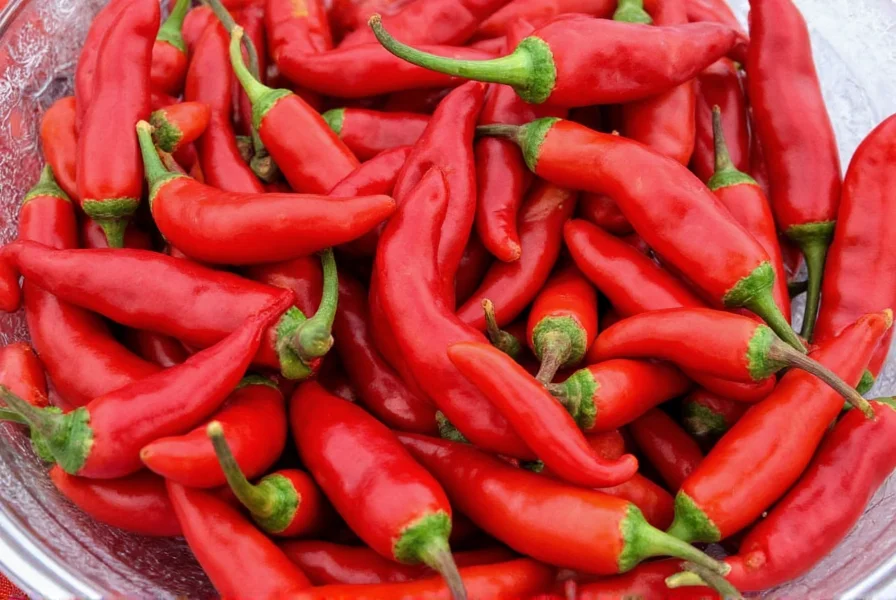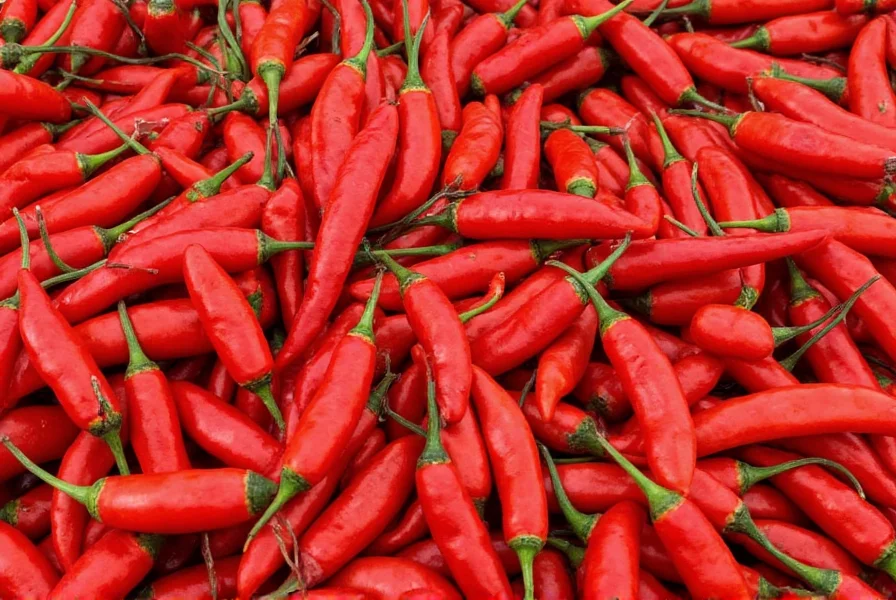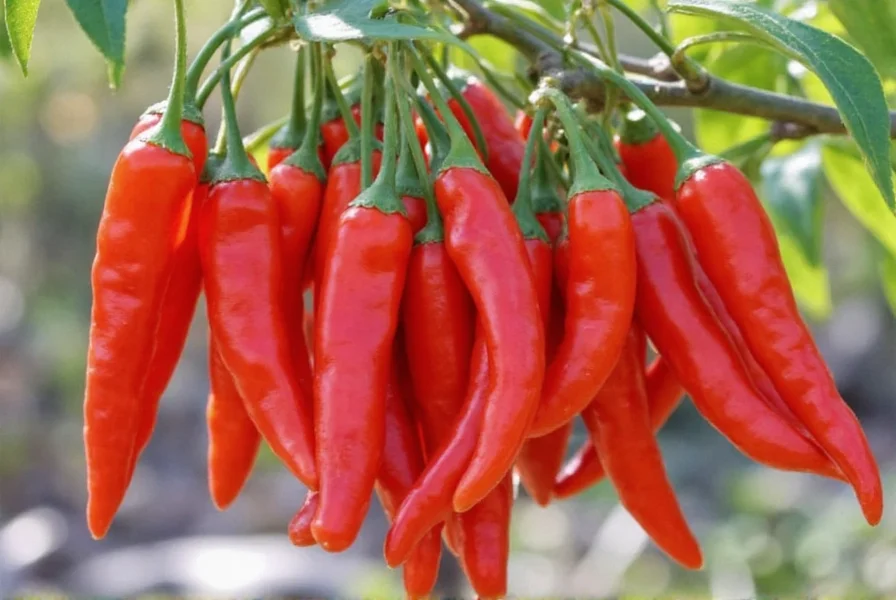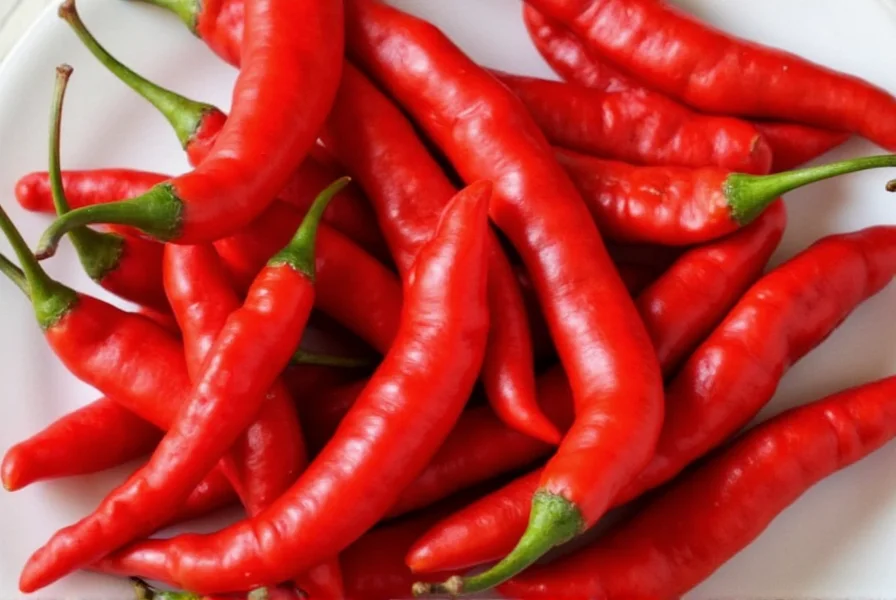If you're searching for "chile de árbol en inglés", the direct English translation is "tree chili". It's also commonly referred to as "arbol chili" or simply "arbol pepper" in English-speaking markets. This small but potent red chili pepper is widely used in Mexican and Latin American cuisine.
Understanding the English name for this ingredient is crucial for finding it in grocery stores or online recipes. In this guide, we'll cover everything you need to know about chile de árbol in English, including its heat level, flavor profile, culinary uses, and where to buy it.
What Is Chile de Árbol in English?

"Chile de árbol" translates directly to "tree chili" in English. The name comes from the pepper's growth pattern—it grows on tall, bushy plants that can reach over 3 feet in height. In English-speaking countries, it's commonly sold as "arbol chili", "tree chili", or "arbol pepper".
Heat Level & Flavor Profile

Chile de árbol ranges between 15,000 and 65,000 Scoville Heat Units (SHU). To put this in perspective:
- Jalapeño: ~2,500–8,000 SHU
- Serrano: ~10,000–23,000 SHU
- Cayenne: ~30,000–50,000 SHU
- Hatch Green Chili: ~1,000–8,000 SHU
It's hotter than jalapeños and serranos but milder than ghost peppers. The flavor profile includes smoky, nutty notes with a citrus-like brightness.
Why You'll Love This Pepper

Whether you're a seasoned home cook or just exploring global flavors, chile de árbol offers:
- Intense heat without overwhelming other flavors
- Versatility in both traditional Mexican dishes and fusion recipes
- Long shelf life when stored properly
5 Cooking Tips for Using Chile de Árbol

- Toast Before Using: Lightly toast whole dried chiles in a dry skillet to enhance nuttiness and deepen flavor.
- Remove Seeds for Milder Heat: The seeds hold most of the heat. Removing them reduces spiciness while preserving flavor.
- Infuse Oils or Vinegars: Whole dried chiles can be added to oil or vinegar for slow-burning heat infusion.
- Add Late in Cooking: To preserve fresh, bright notes, add toward the end of cooking.
- Use Ground or in Salsa: Grind into powder for rubs or blend into salsa for a tangy-spicy kick.
Where to Buy Chile de Árbol in English-Speaking Markets
| Product Name | Brand | Form | Where to Buy | Key Features |
|---|---|---|---|---|
| Whole Chile de Árbol | El Yucateco | Dried Whole | Kroger, Amazon, Walmart | Mild to medium heat; excellent for infusing oils or grinding into powder |
| Ground Chile de Árbol | La Costeña | Powder | Tienda.com, specialty spice shops | Strong aroma; perfect for rubs and marinades |
| Organic Chile de Árbol | Epicurean Harvest | Dried Whole | iHerb, Thrive Market | Non-GMO, organic certification; ideal for health-conscious cooks |
| Chile de Árbol Pods (Pack of 10 oz) | Ranch Direct | Dried Whole | Amazon, specialty Mexican markets | Bulk option; consistent size and color; great for DIY salsa lovers |
| Smoked Chile de Árbol | Sabrosón | Smoked Whole | Goya Foods website, Mercado Latino | Smoky depth; perfect for complex sauces and mole variations |
Pro Tip: Always check packaging for origin and processing methods. Look for chiles that are pliable and not overly brittle—they should snap slightly when bent, indicating freshness.
Chile de Árbol vs. Other Popular Chilies: Heat & Flavor Comparison
| Chili Type | Scoville Heat Units (SHU) | Flavor Notes | Best Use Case |
|---|---|---|---|
| Chile de Árbol | 15,000 – 65,000 | Smoky, nutty, citrusy | Salsas, oils, soups, meat marinades |
| Jalapeño | 2,500 – 8,000 | Grassy, earthy | Tacos, nachos, stuffed poppers |
| Serrano | 10,000 – 23,000 | Crunchy, vegetal | Salsas, pico de gallo, sauces |
| Cayenne | 30,000 – 50,000 | Sharp, biting | Spice blends, curries, hot sauces |
| Ancho | 1,000 – 2,000 | Sweet, raisin-like | Mole, stews, braises |
FAQ: Chile de Árbol in English
What is chile de árbol in English?
"Chile de árbol" translates directly to "tree chili" in English. It's also commonly called "arbol chili" or "arbol pepper" in English-speaking markets. The name comes from the pepper's growth pattern on tall, bushy plants.
How hot is chile de árbol compared to other common peppers?
Chile de árbol ranges from 15,000 to 65,000 Scoville Heat Units (SHU). This makes it hotter than jalapeños (2,500-8,000 SHU) and serranos (10,000-23,000 SHU), but milder than ghost peppers (855,000-1,041,427 SHU). It's comparable to cayenne pepper (30,000-50,000 SHU) but with a more complex flavor profile.
Where can I buy chile de árbol in English-speaking countries?
You can find chile de árbol in Mexican/Latin grocery stores (usually in the dried spice section), major supermarkets like Kroger, Walmart, and Target (often in the international foods aisle), online retailers like Amazon, and specialty spice shops. Look for it labeled as "arbol chile", "chile de arbol", or "tree chili".
What are good substitutes for chile de árbol if I can't find it?
Good substitutes include: cayenne pepper (similar heat level but less complex flavor), Thai bird's eye chilies (similar heat with different flavor profile), or a combination of crushed red pepper flakes and a pinch of smoked paprika to mimic the smoky notes. For milder dishes, serrano peppers can work in fresh applications.
How should I store chile de árbol to keep it fresh?
Store dried chile de árbol pods in an airtight container in a cool, dark place. Properly stored, they'll maintain their flavor for 6-12 months. For longer storage, keep them in the freezer where they can last up to 2 years. Ground chile de árbol loses potency faster—use within 3-6 months for best flavor.
What dishes work best with chile de árbol?
Chile de árbol shines in salsas (especially roasted tomato salsa), oil infusions, soups, stews, and meat marinades. It's excellent in traditional Mexican dishes like salsa de árbol, but also works well in fusion recipes. Its smoky, citrusy notes complement grilled meats, seafood, roasted vegetables, and even some chocolate-based mole sauces.
How can I reduce the heat of chile de árbol while keeping the flavor?
To reduce heat while preserving flavor: 1) Remove the seeds and white membranes (where most capsaicin concentrates) 2) Toast the chiles first to enhance flavor before adding heat 3) Use fewer chiles and balance with acid (like lime juice) or sweetness 4) Add dairy (like yogurt or cheese) to counteract heat in finished dishes 5) Infuse oils with whole chiles rather than chopping them finely.











 浙公网安备
33010002000092号
浙公网安备
33010002000092号 浙B2-20120091-4
浙B2-20120091-4